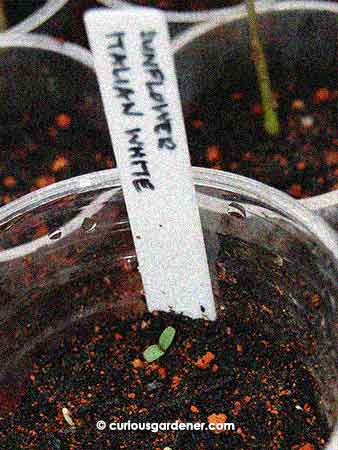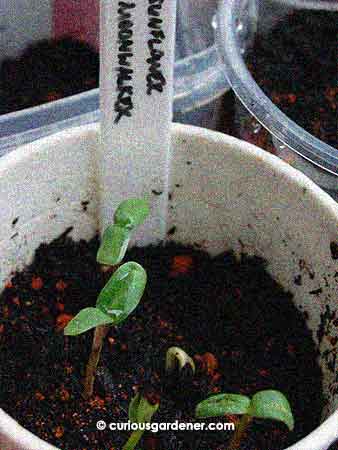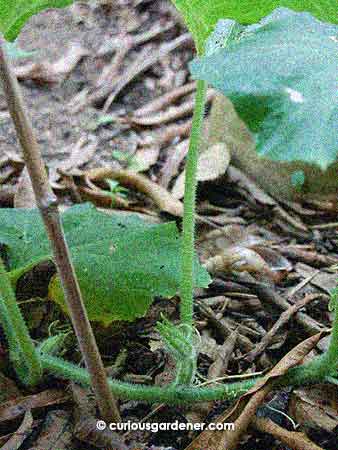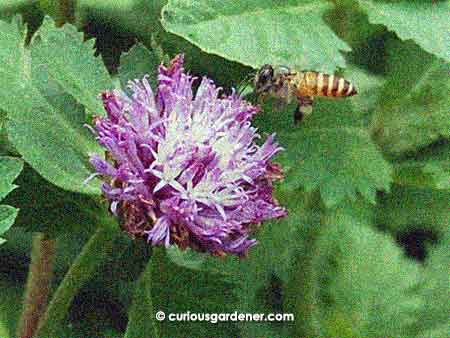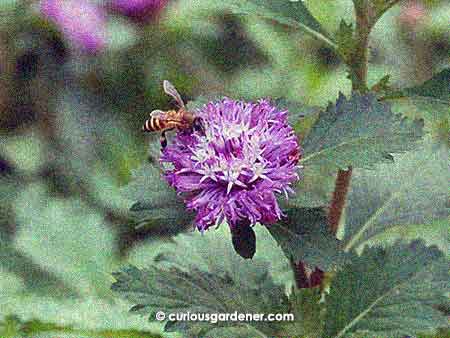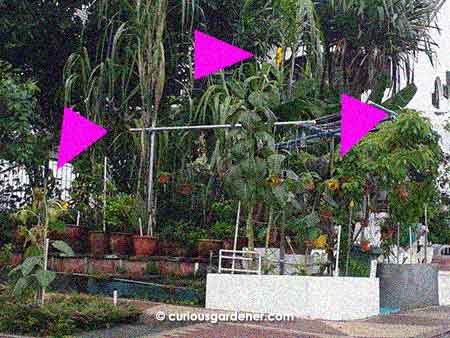
The roadside garden that made me want to grow sunflowers again. Note the giant sunflower plant at the back. Slurp.
I’m getting that urge to grow sunflowers again. Alright, I’ve had the feeling for several weeks now. It’s because I passed a house that had several sunflower plants growing along the road, and that re-awakened my want for these flowers once more.
I pulled out the remainder of my sunflower seeds obtained in 2010, but they didn’t appear to be viable any more. Novice Gardener then came to my rescue with more seeds, and I’ve been thrilled to see some of them start germinating. Even better, these are varieties I’ve never grown before:
Velvet Queen is a dark red variety with a black centre. This will be the first red sunflower we will have growing in our garden.
Italian White has creamy white petals and deep chocolate centres. That makes me hungry for some reason… This, too, will be a first new colour growing here.
Moonwalker is supposed to be one of the giant varieties that can grow between 8 to 12 feet high. I hope I’ll be able to get it to grow that big! This plant bears pale yellow flowers with similar centres.
I’m still waiting to see if any other varieties germinate, but have to admit that after seeing the roadside garden – especially the tallest sunflower – I want to try my hand at growing giant sunflowers again. The Moonwalker plants will pave the way until I get more “cousins” to keep them company…
© 2012 curiousgardener.com All rights reserved.


